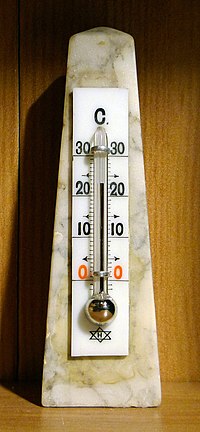
Photo from wikipedia
Earth’s climate may be stabilized over millennia by solubilization of atmospheric carbon dioxide (CO2) as minerals weather, but the temperature sensitivity of this thermostat is poorly understood. We discovered that… Click to show full abstract
Earth’s climate may be stabilized over millennia by solubilization of atmospheric carbon dioxide (CO2) as minerals weather, but the temperature sensitivity of this thermostat is poorly understood. We discovered that the temperature dependence of weathering expressed as an activation energy increases from laboratory to watershed as transport, clay precipitation, disaggregation, and fracturing increasingly couple to dissolution. A simple upscaling to the global system indicates that the temperature dependence decreases to ~22 kilojoules per mole because (i) the lack of runoff limits weathering and retains base metal cations on half the land surface and (ii) other landscapes are regolith-shielded and show little weathering response to temperature. By comparing weathering from laboratory to globe, we reconcile some aspects of kinetic and thermodynamic controls on CO2 drawdown by natural or enhanced weathering. Description A global rate for weathering Chemical weathering is an important way that carbon dioxide is regulated over geological time scales. However, many factors go into the rate of weathering, making scaling from laboratory to global estimates challenging. Brantley et al. assessed weathering rates across several different length scales to understand the rate-limiting factors for major rock types on Earth (see the Perspective by Hilton). The authors used this information to upscale globally to get an estimate of the temperature dependence of chemical weathering. The resulting model will be helpful in understanding the weathering response to climate change in attempts to increase weathering in the future. —BG The temperature sensitivity of atmospheric carbon dioxide removal by weathering increases and then decreases from laboratory to globe.
Journal Title: Science
Year Published: 2023
Link to full text (if available)
Share on Social Media: Sign Up to like & get
recommendations!